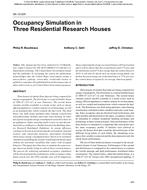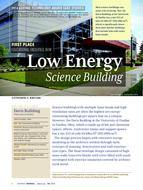The energy consumption in building sector is large and growing nowadays, and a large number of energy-related technologies have been applied to the HVAC system to improve the energy effiency in buildings. Hydronic radiant panel heating and cooling systems are regarded as a viable alternative for replacing existing fossil fuels with renewable energy sources for the heating and cooling of buildings. In South Korea, there have been recent attempts to apply hydronic radiant panel heating and cooling systems to high-rise buildings. By operating a hydronic radiant panel heating and cooling system on the ceiling and walls, a comfortable office environment can be obtained and energy efficiency in buildings can increased by minimizing temperature differences in building HVAC system. In this study, to evaluate the thermal comfort of a hydronic radiant ceiling and wall panel system in heating operation, we conducted a pilot test within room surrounded by prefabricated ceiling and wall panel embedded in hydronic piping. We examined the effects of thermal comfort for the occupants by mounting sensors at different parts of the panel. The test was conducted at night for a total of 6 h and examined three operation modes (wall panel operation, ceiling panel operation, and ceiling+wall panel operation). During the pilot test, we measured the air temperatures (mean, vertical distribution), surface temperatures, relative humidity, air velocity, operative temperature, and PMV. In results, we have compared the room thermal environments of each operation mode if the room conditions can meet acceptable thermal comfort criteria of ASHRAE 55-2010.
Citation: ASHRAE Papers CD: 2014 ASHRAE Winter Conference, New York, NY
Product Details
- Published:
- 2014
- Number of Pages:
- 8
- File Size:
- 1 file , 1.4 MB
- Product Code(s):
- D-NY-14-C088


